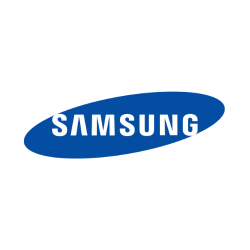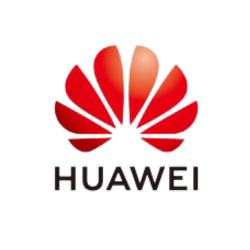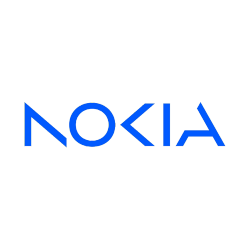
BLU Smart Overview
The BLU Smart was introduced to the market in the late 2010, standing as a feature phone aimed at providing basic mobile functionalities. Despite its discontinuation, this device remains a relevant study for understanding early 2000s mobile design and technology.
Network and Connectivity
The BLU Smart supports GSM and HSPA technologies, offering fundamental connectivity that was standard for mobile phones during its release. It operates on GSM bands 850, 900, 1800, and 1900, as well as HSDPA bands 850 and 2100. The device provides data speeds of up to HSPA 3.6/0.384 Mbps, allowing for basic internet connectivity and web browsing.
Launch Details
Announced in September 2010 and released a month later, in October, the BLU Smart had a brief presence in the mobile phone market. Its status now is discontinued, which reflects the rapid technological advancements seen in the telecommunications industry.
Physical Design
The body of the BLU Smart is compact, with dimensions of 104 x 55 x 12.2 mm. Weighing 102 grams, the phone is lightweight and easy to carry. It supports a Mini-SIM card and is designed with a relatively simple and minimalist aesthetic that prioritizes functionality over flair.
Display
The display of the BLU Smart is a 3.0-inch TFT resistive touchscreen which supports 256K colors. Although the screen size is small by today's standards, this was typical for feature phones at the time of its release, providing users with basic visual interaction for texting and application navigation.
Memory and Storage
The BLU Smart is equipped with a microSDHC card slot for expandable storage, an essential feature given its limited internal memory of 52MB. The phone can store up to 1000 contacts in its phonebook, catering well to the needs of its users for basic calling and messaging.
Camera Capabilities
Featuring a single 2 MP rear camera, the BLU Smart offers basic photographic capabilities. It can record videos, although the quality is limited given the camera's specifications. The phone also includes a front camera, supporting rudimentary selfie photographs.
Sound and Audio
The BLU Smart is equipped with a loudspeaker, although it does not have a 3.5mm headphone jack, requiring users to likely rely on wireless solutions for personal audio. The inclusion of FM radio provides users access to radio broadcasting, a valued feature before the mass adoption of music streaming services.
Communication Features
For communication, the BLU Smart has several features including Wi-Fi 802.11 b/g, Bluetooth 2.0 with A2DP, and proprietary USB connectivity. It lacks modern GNSS positioning but provides FM radio access, further highlighting its core communication-focused functionality.
Core Features and Functionality
The BLU Smart comes with basic applications including SMS, MMS, Email, and Instant Messaging. The browser is WAP 2.0/xHTML based, limiting the web experiences compared to modern standards. It supports downloadable games and Java, maintaining entertainment within the constraints of limited processing capabilities.
Battery Life and Performance
The phone is powered by a removable Li-Ion 800 mAh battery, providing up to 600 hours of standby time and 7 hours of talk time, an impressive feat for its time ensuring long-lasting usage in daily scenarios.
Miscellaneous Features
A choice of colors was not a significant selling point for the BLU Smart; it was available only in black, a standard and professional finish for mobile phones of that era.
Conclusion
The BLU Smart represents an era of feature phones that emphasized core functionalities like calling, messaging, and basic connectivity. Its simple interface, compact design, and essential features serve as a reminder of mobile technology's evolution, reflecting user needs before smartphones became prevalent.
Key Features of BLU Smart
- Supports GSM and HSPA technology for 3G connectivity.
- Compact dimensions for easy handling: 104 x 55 x 12.2 mm.
- Lightweight design, weighing only 102 grams.
- 3.0-inch TFT resistive touchscreen with 256K colors.
- Expandable storage with microSDHC card slot.
- Includes a 2 MP main camera with video recording capabilities.
- Wi-Fi 802.11 b/g for wireless connectivity.
- Bluetooth 2.0 with A2DP support for wireless audio streaming.
- FM radio for entertainment on-the-go.
- Removable Li-Ion 800 mAh battery with up to 600 hours of standby time.
Disadvantages of BLU Smart
- No support for 4G LTE technology, limiting network speed and compatibility with modern networks.
- Discontinued status means lack of official support and updates.
- TFT resistive touchscreen is not as responsive or accurate as modern capacitive touchscreens.
- Low resolution display with unspecified pixel density.
- Limited internal storage of 52MB, which is not sufficient for modern apps and media.
- Main camera is only 2 MP, offering low image quality compared to current standards.
- No 3.5mm headphone jack, which is a standard feature for personal audio use.
- No built-in GPS for location services and navigation.
- Uses a proprietary USB connection instead of the more standard microUSB or USB-C.
- Lacks any form of advanced sensors such as accelerometer or proximity sensor.
- Battery capacity of 800 mAh is quite low, likely resulting in poor battery life by today's standards.



View Also
More Phones
All Rights Reserved +14038 Phones © Mobilawy 2025

























